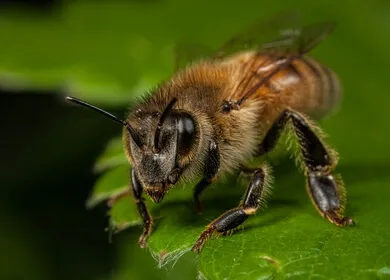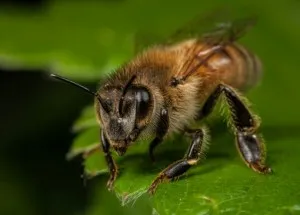
- Share on Facebook198
- Share on Pinterest
- Share on Twitter
As you put your honey into your tea or on your toast this morning, did it cross your mind that the beneficial insects that produce this wonderful sweet treat are rapidly disappearing without a trace?
The honeybee population has been on a steady decline since the 1940’s. In fact, in the 40’s it was estimated that there were over 5 million honeybees in America, while today it is thought that there remain a scant 2.5 million. In the winter of 2012/2013, there was a 30% loss in honeybee colonies, which is the highest recorded loss in recent history.
Commonly referred to as colony collapse disorder (CCD), the disappearance of the bees is somewhat stumping researchers, who are scurrying to identify the problem and remedy the situation.
Everything from pathogens to parasites, environmental stressors and management stressors, are being reviewed in an effort to understand what is going on. At this point in time, there is no firm agreement as to why we seem to be losing our bees.
While lending a sympathetic ear to this tragic occurrence is a good place to start, it should not stop there. Even if you don’t enjoy the sweet goodness of honey, the implications of losing honeybees is much further-reaching.
When you sit down at the dinner table, it is important to understand that one out of every three bites of food you put into your mouth comes from plants that have been pollinated by bees. Without bees, one third of all of our food would be gone. Bees contribute over $44 billion a year to the United States economy.
To demonstrate the severity of the problem and to raise awareness, Whole Foods Market partnered with a nonprofit group called Xerces Society in a campaign labelled “Share the Buzz.” To bring the point home, one Whole Foods store actually removed all produce that relies on bee pollination from their store shelves. Seeing the empty produce sections really creates a visual impact for customers.
Over 237 of the 453 products were removed. Among those gone were apples, bok choy, green onions, kale, leeks, limes, lemons, mangos, broccoli, summer squash, carrots, honeydew, cauliflower, cucumbers and celery. All of these foods and more are entirely dependent on bees.
More than 85 percent of the earth’s food system relies on pollinators to exist. Many of these foods are ones that provide us with the most nutrition, which makes matters much worse. We can all do without a toasted pastry, but if our fruits and veggies disappear, the health and economic implications will be vast.
What Can Be Done?
While you may feel helpless to help the bees, there is actually quite a bit that you can do. The first is to understand what is happening and commit to making a difference. Organizations such as the Xerces Society helps farmers create wildflower habitats for bees and adopt less aggressive pesticide-intensive practices.
 Beekeepers, concerned citizens and advocacy groups such as the Natural Resource Defence Council are begging for a stop to the use of dangerous pesticides called neonicotinoids. These chemicals are thought to be causing the bees to demonstrate the same symptoms that humans have with Parkinson’s and Alzheimer’s disease.
Beekeepers, concerned citizens and advocacy groups such as the Natural Resource Defence Council are begging for a stop to the use of dangerous pesticides called neonicotinoids. These chemicals are thought to be causing the bees to demonstrate the same symptoms that humans have with Parkinson’s and Alzheimer’s disease.
Just making this difference alone can do a great deal to create desirable habitats for bees. We can help save the bees and our food in other ways, as well. Adopting natural methods of running our homes and our gardens without the use of toxic pesticides is a start. Buying organic also supports the pollinators.
Planting bee-friendly flowers and fruits in the landscape will help to provide habitats for the bees, and we can also shop in places where we see “Share the Buzz” signs.
If nothing else just bee..more aware!
-The Alternative Daily
Sources:
http://www.mnn.com/food/healthy-eating/stories/what-a-grocery-store-without-bees-looks-like
http://www.mnn.com/earth-matters/wilderness-resources/stories/honeybees-need-our-help-as-populations-continue-to
- Share on Facebook198
- Share on Pinterest
- Share on Twitter

